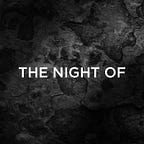Anatomy of a Scene Ep. 7: Courtroom Scenes
The Night Of — Episode 7
Following each episode of The Night Of co-writer/director Steven Zaillian breaks down elements of a key scene.
Steven Zaillian: With a story that follows a case through the justice system, there would naturally have to be courtroom scenes. But what did Richard Price and I know about courtrooms and legal procedure when we began? Very little, we admitted to each other.
It meant we had to research it, to read about it, to consult with attorneys, to spend time in the courtrooms at the Criminal Court building at 100 Centre Street.
This gave us some confidence with the writing as we placed the fictional story of the Khan case into the reality of the actual places we had spent time at. I really don’t think there’s any other way to even get close to understanding how it all works, apart from becoming a lawyer, or getting arrested and charged with a crime yourself.
The arraignment court scenes in the early episodes were shot by Igor Martinovic in actual New York City courtrooms. The trial scenes in Episodes 6, 7, and 8 were shot by Fred Elmes on a set built by Production Designer Lester Cohen and his team.
Originally, on the design drawings for this large courtroom set, there were windows lining both of the long side walls. Later, for budget reasons, it was decided only one wall of windows could be constructed, and it had to be on the jury side because of space limitations on the stage. This concerned me because the actors would most often be angled toward this wall, and the cameras, which would mean they’d be front-lit, flat. But this set was a mountain that couldn’t be moved. The solution was leave the walls where they were and flip everything inside them — moving the judge’s bench and witness box and lawyers’ tables to where the gallery was, and the gallery and exit doors to where the judge’s bench was, a complete 180 of the interior — which is what we did. Now, without having to reconstruct any walls, the windows were where they needed to be in relationship to the action to be able to backlight the actors.
But how to shoot in an interesting way so many scenes in a place so familiar to so many viewers of so many legal shows, where an attorney always stands here and the witness always sits there?
It seemed to me the best way was to compose and light these shots as classically as possible, and then really concentrate on what was going on inside those frame lines: the characters, their behavior, the subtleties of how they say what they’re saying, what they’re thinking when they’re not saying anything. In other words, the details of their characters. After all, if that’s not interesting and compelling, how it’s shot isn’t going to matter in the least.
For the actors’ sake, to help keep what they were saying fresh to them, we would, as much as we could, shoot with multiple cameras, which translates into fewer takes.
One might notice there are very few shots of the jury in these scenes. Often I feel when you cut to a jury, you’re trying to tell the audience what to think, as if they otherwise wouldn’t know. This didn’t seem necessary, or advisable, to me. I wanted the viewing audience to be ‘the jury,’ and felt that shots to our jury would undermine that. On the rare occasions I did shoot the jury, I told them to show no reaction, none. I didn’t want them coloring what the viewer might think at those moments. In fact, I usually shot them without any dialog going on off-screen to react to.
From creators Steven Zaillian and Richard Price, The Night Of is an eight-part limited series that delves into the intricate story of a fictitious murder case in New York City.
New episodes of The Night Of air Sundays at 9 PM on HBO and are available on HBO GO and HBO NOW.
